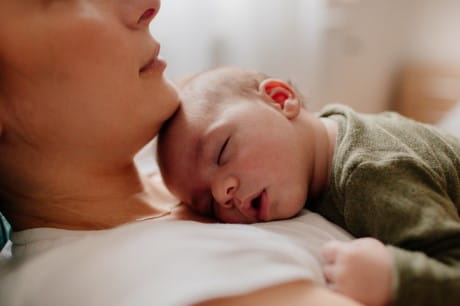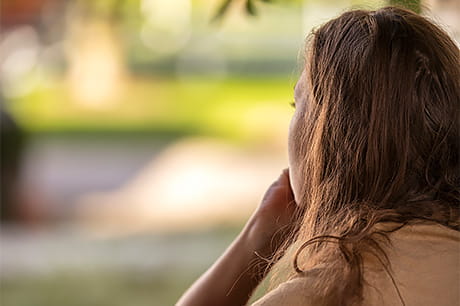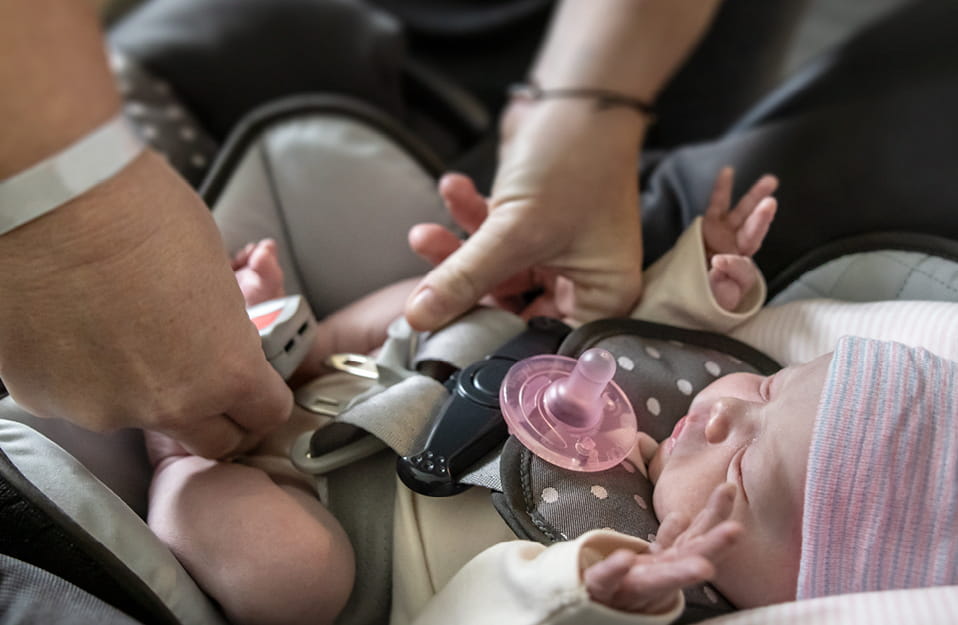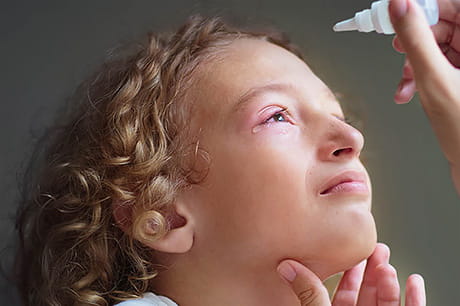Is co-sleeping safe?
What you need to know about co-sleeping and bed-sharing.
Sleep is precious, especially when you’re raising a newborn. Many parents maximize sleep and bonding time through co-sleeping — sleeping in the same room as (and typically within reach of) your baby.
Despite easy access to your little one, some forms of co-sleeping can have harmful effects on your and your baby’s health.
"Some parents find bed-sharing helps them and their babies get to sleep more easily, and they feel it provides more bonding time," says Geisinger pediatrician Marie Lena, MD. "However, in addition to possible tragic repercussions, there's evidence to suggest it isn't beneficial for the child or parent."
Is co-sleeping safe for you and your baby? Know the pros and cons. An informed decision on sleeping arrangements can get your baby’s health off to a good start.
What is co-sleeping?
Co-sleeping is when you and your baby sleep in the same room. It’s a common practice for newborns, since they need lots of attention. Pediatricians recommend safe co-sleeping until your baby is at least 6 months old. The benefits include:
- Reduced separation anxiety
- Less time needed to check on your baby
- Easier breastfeeding
- More sleep time for you and your baby
The psychological effects of co-sleeping are also enough to bring parents on board. Co-sleeping builds a strong emotional bond between you and your baby. It can also cut down on crying for attention — allowing more energy for brain growth.
While co-sleeping might seem like an obvious choice for you and your baby, there are key distinctions to make.
Types of co-sleeping
Co-sleeping breaks down into two broad categories: room-sharing and bed-sharing.
Room-sharing is when you place a bassinet, crib or co-sleeper for your baby in the room where you sleep. Bedside sleepers, which sometimes attach to your bed and act as a separate bed for your baby, count as room sharing.
Bed-sharing involves sleeping with your baby on the same bed (or sofa or chair). Put simply, bed-sharing is a form of co-sleeping, but not all co-sleeping is bed-sharing.
You may be tempted to bring your baby into bed with you. After all, it’ll take even less time to feed or check on the baby in the middle of the night if they’re right next to you. Before you do though, make sure you know the risks involved so you can practice safe bed-sharing with your baby.
Why bed-sharing might not be for you
Bed-sharing might help your baby fall asleep more quickly if you're there when they wake. It can also encourage breastfeeding by making those nighttime feedings more convenient. But evidence suggests that both parent and baby often end up getting less sleep.
"Infants tend to move around and make sounds while they sleep, which could disturb your sleep or wake you because you think your baby needs something," Dr. Lena says. "Sometimes infants whimper, wake and go right back to sleep during the night — so if you pick up your baby with the first whimper, you may prevent them from falling back to sleep on their own."
Babies sleeping next to their parents tend to spend less time in deep stages of sleep and wake up more often.
"If you want to make nighttime feedings easier and keep your baby close while sleeping without the safety risks, putting a crib or bassinet in your bedroom can be a much safer and comfortable option for both you and your baby," Dr. Lena says.
However, some parents decide that bed-sharing is a better fit for them. Others don't make the conscious decision to share a bed with their infant — it just sort of happens. Knowing why bed-sharing can be dangerous to your baby may change your mind.
Risks of bed-sharing
Bed-sharing leads to an increased risk of sudden infant death syndrome (SIDS) and sudden unexplained infant death (SUID). When a baby is in your bed, they’re near obstacles and suffocation hazards like:
- Blankets
- A soft mattress
- Lose-fitting sheets
- Long hair
- Necklaces
- Bed rails
- Soft cushions
Make sure you're set up in a spot that's safe for your baby If you accidentally fall asleep with them. Sofas and armchairs are considered the most dangerous.
Safe bed-sharing with your baby is possible, but has risks. The American Academy of Pediatrics recommends room-sharing but not bed-sharing. As a rule, the academy recommends safe co-sleeping to reduce the risk of SIDS and SUID.
"In order to ensure your baby is always safe while sleeping, they should be placed to sleep on their back on a firm surface," Dr. Lena says. "Additionally, their crib or bassinet should be free of fluffy pillows, blankets or stuffed animals — they can pose a suffocation risk."
And while sleeping apart from your snuggly little bundle of joy might be tough, in the long run it's better for you and your child.
Next steps:
Learn about pediatric care at Geisinger
Find a pediatrician
Meet Marie S. Lena, MD





